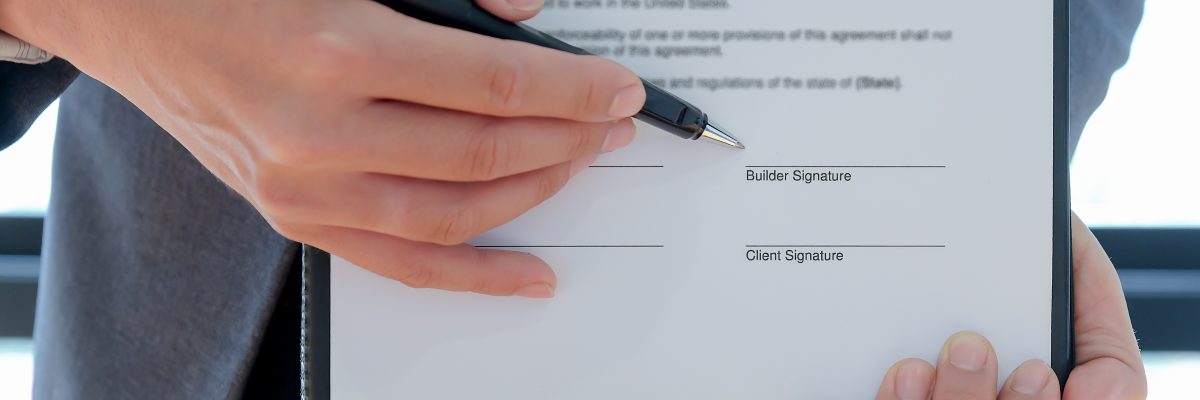Few things to lookout for in a Building Contract:
Schedule 1: Particulars of Contract – Ensure its filled out completely by your builder prior to signing. Double check that the name on the land title doc is the same as the name on the contract and also that the builder’s name and ABN number matches. This accuracy is crucial, should you have to claim on the Builder’s Warranty Insurance.
If you sign a blank contract, its like signing a blank cheque.
Schedule 2: Progress Payments – Do the math to confirm that the progress payment schedule adds up to the total contract value. At the end of the day, its filled out by a human and mistakes are possible. Check before you authorise greater amount of payments. The invoices you receive during your build will be based on these numbers.
Clause 27: Confirm with your builder that they will issue an ‘Occupancy Certificate’ at the end of the build. If not, why not. The date on the occupancy certificate is the ‘official’ date when the building is yours. So all warranty claims, defects liability period etc is calculated based on this date.
Defects Liability Period: Simply put, this is the time period in which you can get the builder to fix any issues you discover once you start living in. At the time of writing this article, there is a standard period of 13 weeks after your new home is completed, where the Builder will come back and fix any defects on the property. Whilst this is the contractual arrangement, by law the Builder must guarantee their work for a period of 6 years for any “major defect” (being defects to a major element of the house) and a period of 2 years for all other defects. Bear this in mind if there are any defects after the 13-week period.
Special Conditions Page: Ensure you check this page for any ‘special’ conditions the builder has put in the contract and go a step further by initialling each point. This way, they cant add anything after and be sneaky about it. Believe me, having worked with many builders, it is a possibility. If you do not agree or understand anything in this section, ASK. You can also request for something to be added or minus to increase clarity.
Get a copy of the Consumer Building Code: This is a handy guide in understanding your rights and obligations as an owner. Ideally a copy of this guide should be given to you along with the contract. If you need access to the guide, you can get it here. (https://www.consumer.vic.gov.au/housing/building-and-renovating/plan-and-manage-your-building-project/domestic-building-consumer-guide)
Specifications of your Build: An extensive list of inclusions should be ideally accompanied with the contract. Research and have your upgrades included in the contract price. Remember Variations are Expensive and that s where most builders make the maximum amount of money.
Finalise Floor Plans: Once you have your upgrades and inclusions finalised, the builder should ideally reflect all those items on the final set of plans. Before you sign the floor plans off, review it and ensure what you asked for is included in the drawings. These drawings will be distributed to all trades and will form the reference foundation for your build. If its not in the drawings, not in the specifications documents – its not in the contract.
Top Tip: Don’t be rushed into signing a contract (including floor plans and specifications). If things go pear shaped, the contract if the piece of document that you will be relying on.
Get a professional to review the contract if you are unsure or have a complicated build on hand.



